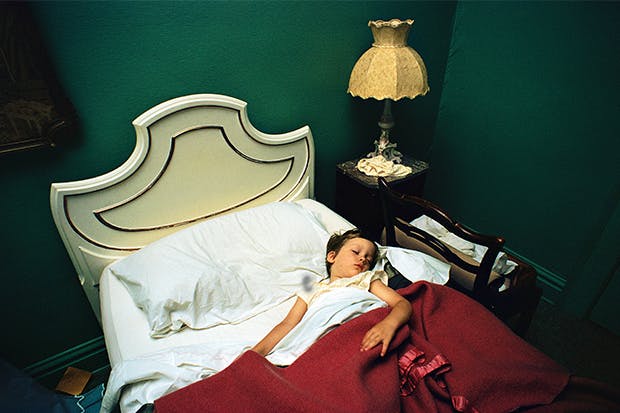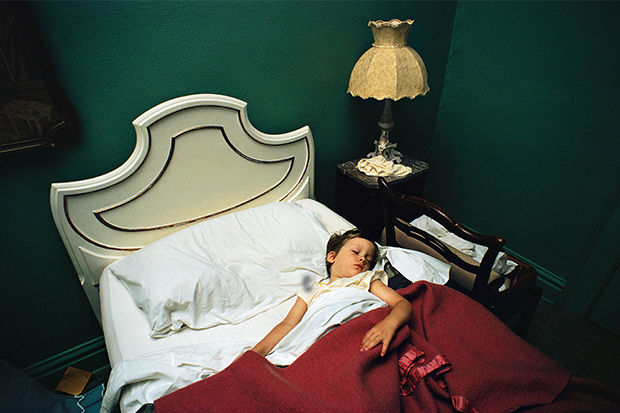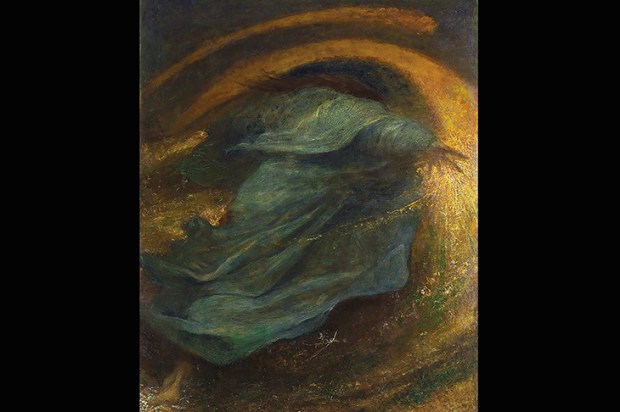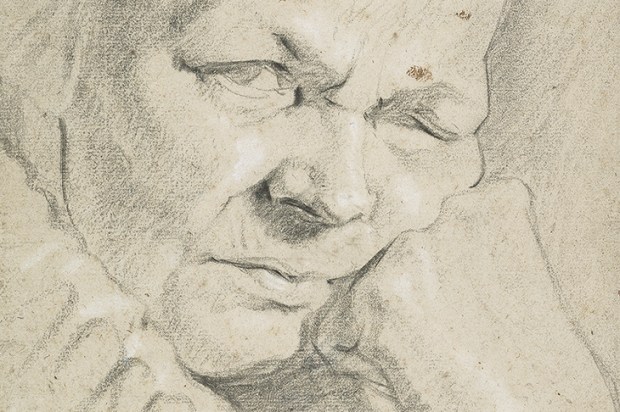In 1965 William Eggleston took the first colour photograph that, he felt, really succeeded. The location was outside a supermarket in Memphis, Tennessee; the time — to judge from the rich golden light and long shadows — late afternoon. Eggleston’s subject — a young man with a heavily slicked, early Elvis hairstyle stacking trolleys outside the shop — was as ordinary as he could be. But the result was a photographic masterpiece.
It is included in the exhibition William Eggleston: Portraits at the National Portrait Gallery, although, by most definitions, it is not a portrait. Indeed, it is as hard to say just what it is as it is to explain exactly why it is so good.
Actually, great pictures are often images of very commonplace sights. The ‘Mona Lisa’ is just a woman smiling in front of a view — the theme of a trillion selfies; Van Eyck’s ‘Arnolfini Portrait’ simply depicts two people standing in a room. Somehow, you feel that this moment outside the Memphis supermarket was significant, even if nobody (including perhaps the photographer) could say what it means.
Many of the works at the NPG seem to present fragments from a drama: one shows a lover of Eggleston’s, her face streaked with tears. Another features a friend named T.C. Boring, described in the exhibition as ‘an eccentric dentist’, standing stark naked and pensive in a bedroom flooded with blood-red light and adorned with random spray-painted words: ‘God’, ‘Mona’, ‘Tally ho’.
In both cases, as often in Eggleston’s best images, something is clearly going on, but we aren’t quite sure what. At times, as with the supermarket-trolley parker, there is a sense of mysterious revelation. The great blues singer Mississippi Fred McDowell lies in a sumptuous satin-lined coffin, looking not so much dead as transfigured.
The catalogue essay by the curator, Phillip Prodger, recounts how the photographer was once pressed to explain a shot of his infant son lying asleep in bed (pictured above). Is this a meditation on childhood, or a commemoration of this boy at a tender age? No, Eggleston insisted, sounding a bit vexed, ‘It’s something more ambiguous than that.’
Ambiguity is the essence of what he does. One of the closest exhibits to conventional portraiture — in that it is clearly posed — presents Eggleston’s uncle with his driver and assistant. The former is white, the latter black. They are standing, hands in pockets, on a carpet of autumn leaves, with a car — its door left open — parked to one side. You feel the men have recently arrived and are waiting, tense yet resigned, for something to happen.
Such images could well be stills from a film by David Lynch or the Coen brothers (both influenced, I would guess, by Eggleston). They are filled with a vision of America: strange, beautiful, slightly sinister. In Eggleston’s case the location is often his native Deep South. He was born in 1939 in Memphis and grew up partly on his family’s cotton plantation.
Eggleston works in a line that descends from Henri Cartier-Bresson and Robert Frank, photographers who discovered their subjects in the world around them — almost like Duchamp’s found objects — but produced pictures that locked together with compelling visual logic. Cartier-Bresson told me that what he did was all about geometry — and poetry (‘It’s a joy, it’s an orgasm’).
Like Cartier-Bresson and many great photographers, Eggleston also, it turns out, knows how to draw — a painter’s eye no doubt helps compose pictures. In the catalogue a sketch of Eggleston’s is reproduced, a Kandinsky-like abstraction in sharp red, green and yellow. This is revealing because colour was Eggleston’s contribution to the Cartier-Bresson tradition (previously anything but black and white had been considered vulgar).
He has often used a process — dye transfer — which produces an intensely saturated range of hues. But it’s the way he uses that palette that is crucial. There isn’t all that much colour in the shot of the trolley stacker, but the way the oranges and ochres of the subject’s hair and skin harmonise with the blue-green handles of the trolleys is pitch-perfect. The focus is sharp — just on the man’s head and shoulder — emphasising a delicate sequence of shadows on his rumpled nylon shirt, as if it were the satin robe of a courtier by Van Dyck.
Eggleston has taken some of the most memorable photographs of the past half- century. So the NPG exhibition is most welcome, even if what he is doing isn’t really portraiture. It’s something much more ambiguous than that.
Got something to add? Join the discussion and comment below.
Get 10 issues for just $10
Subscribe to The Spectator Australia today for the next 10 magazine issues, plus full online access, for just $10.














Comments
Don't miss out
Join the conversation with other Spectator Australia readers. Subscribe to leave a comment.
SUBSCRIBEAlready a subscriber? Log in